Active protection systems for armored vehicles
Protection of armored vehicles is designed to withstand various damaging elements, primarily kinetic projectiles, shaped charges and strike nuclei, each of which has its own unique method of destruction. Protection is divided into contact, showing their properties in direct collision with striking elements, and contactless, acting at a certain distance from the combat vehicle. The first type is inert and reactive armor (dynamic protection), the second type is active protection.
In turn, inert armor is divided into homogeneous and composite. Homogenous armor was originally used in the form of riveted, cast or welded bodies and towers of combat vehicles made of steel. Possessing all the qualities of a protective and at the same time structural material, it has the only drawback - great weight, which deprives the mobility of armored vehicles. Therefore, at present, homogeneous armor plays the role of a carrier base with minimal weight and protective properties, on which composite or reactive armor is hung.
Composite armor consists of individual modules, mounted or inserted into the cavity of a homogeneous armor in the frontal part of the hull and turret of a combat vehicle. If the bearing capacity of the surface on which the armored vehicles move allows, the armored modules are also hung on the sides of the hull and turret. As a rule, a separate module consists of a set of reflective screens separated by air gaps and fastened together by bolted connections. The most effective solution is a combination of various types of materials - metal, ceramics and polymers. For example, reflective American screens tank Abrams M1 A2 SEP are made of ceramic plates (uranium oxide), coated on both sides with synthetic rubber and lined with thin sheets of titanium alloy.
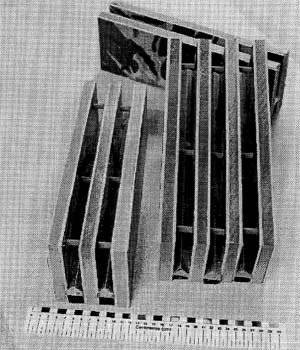
Composite armor due to the use of the most optimal materials and the presence of air gaps between reflective screens has the best combination of protective properties and weight. However, it has an unavoidable drawback — one-time use — after the very first impact of the striking element into the module, the bolt-shaped set of reflecting screens collapses and loses its protective properties. The consequence of this is the complete vulnerability of armored vehicles during the second hit in the destroyed module, the need to have in each advanced unit stocks of modules for the replacement of failed, as well as large material and labor costs for the production of spare modules, in the event of a military conflict of high intensity surpassing the cost of production armored vehicles.
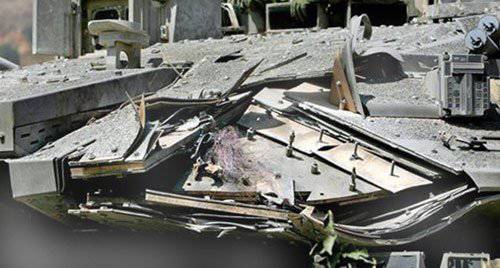
Reactive armor also consists of separate modules - the elements of dynamic protection (EDS), hung on the main homogeneous armor. However, the size of these elements is several times smaller than the size of the modules of composite armor, while each element is simple in design and consists of relatively cheap components - an explosive and missile metal plates (such as Russian "Kontakt" and "Relict") or metal facing cumulative charges ( like Ukrainian "Knife" and "Duplet").
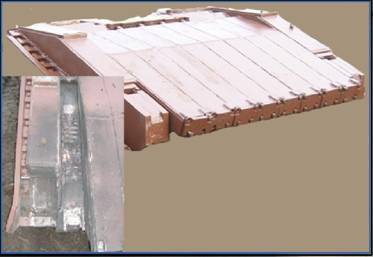
Unfortunately, the possibilities of this type of protection are limited:
- EDS, as well as modules of composite armor, are one-time protection, removed from the occupied area after the first hit;
- EDS should be located at the sharpest possible angle to the flight path of the striking elements to increase the impact area on the latter, which is possible only in an inclined frontal projection of the hull and turret without increasing the dimensions of the combat vehicle;
- EHRs should be the longest to reduce the number of cases of hitting damaging elements in the lower half of the throwing plate / shaped charge with a multiple decrease in the contact area and protective ability;
- with an increase in the length of the ELD with a simultaneous decrease in their width (according to the “Duplet” type), the durability of protection significantly decreases when a striking element approaches from a non-zero angle.
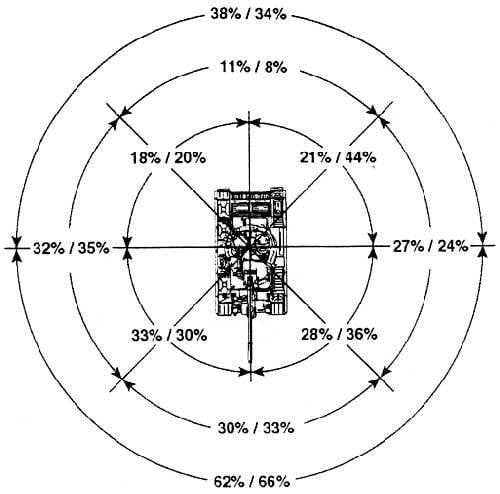
The indicated disadvantages of inert and reactive armor are exacerbated by the changed conditions for the combat use of armored vehicles in modern armed conflicts. Urbanization of flat territories in the form of buildings and structures, the expanding practice of warfare in wooded and mountainous areas, the saturation of infantry with rocket-propelled grenade launchers (such as the Russian RPG-32), the adoption of special ammunition used aviation and MLRS (such as self-guided elements with a strike nucleus) and man-portable missile systems that attack armored vehicles from the upper hemisphere (such as the American ATGM Tow 2B) expanded the range of directions of attack on armored vehicles to a full-angle view.
To date, the only unrealized to the end solution in the field of protection of armored vehicles remains active protection. It consists of the following elements:
- radar target sensors - attacking striking elements;
- computer equipment that calculates the coordinates, speed and direction of flight targets;
- protective ammunition fired in the direction of targets;
- launchers of protective ammunition.
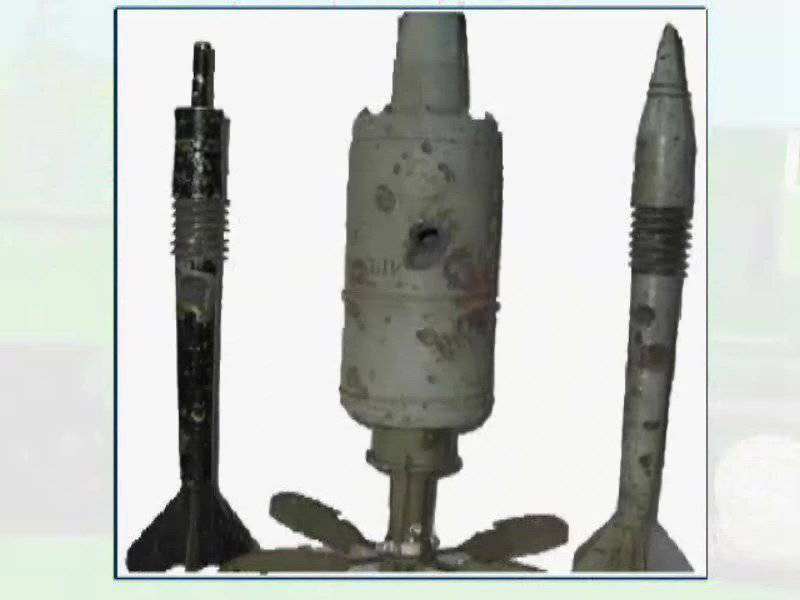
The composition of the complexes and active protection systems (respectively KAZ and SAZ) includes target sensors, protective ammunition and electronic automatic control equipment. The main difference is the type of protective ammunition. Below are descriptions of typical representatives of complexes / systems of active protection.
One of the first KAZ "Rain" was developed in Leningrad VNIITM in 1970-ies. It consisted of separate modules, each of which included two tubular guides, retractable charges with ready striking elements, a radar target sensor located between them, electronic equipment and a mechanism for the promotion of charges. One module was located in the bow and stern of the tank, two modules - on each side of the tank. In a combat situation, one of the protective ammunition of each module is constantly in the extended position. The radar target sensor was triggered at the turn of the 2,2 meter from the perimeter of the tank hull. After that, for an 0,001 second, the extended charge closest to the flight path of the target was undermined. The radially scattering splinters could reject and / or destroy the attacking element flying up at speeds up to 1200 m / s.
The probability of deflection and / or destruction of the target fell in proportion to the distance of the fragmentation of fragments from the longitudinal axis of the sliding charge. A set of six modules provided for interception in the 360 ° sector up to two targets attacking from the front / rear and up to four targets attacking from each flank. The interception of targets attacking from the upper hemisphere was possible in the case of a vertical installation of an additional module, albeit with the destruction of the radio antenna, observation devices and turret machine-gun installation on the roof of the combat vehicle. The short-range complex with radial fragmentation of the fragments did not provide a guaranteed interception of artillery shells with an approach speed exceeding 900 m / s.
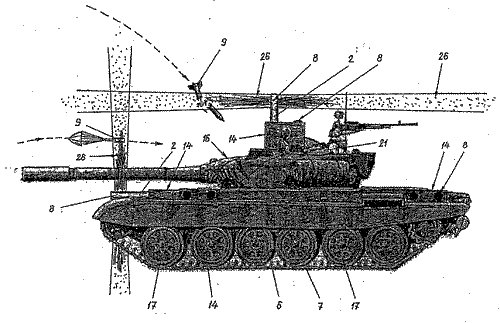
After testing, KAZ "Rain" was transferred to the Kharkov KMDB with the aim of using it in a promising Soviet tanker "Boxer / Hammer". In 1990-s, on the basis of this complex, the Ukrainian KAZ Zaslon was developed, having advanced retractable charges and electronic equipment, distinguishing large-sized attacking targets from bullets, fragments and small-caliber projectiles that are not dangerous for armored vehicles.
The first complex of active protection, put into service, was the Soviet KAZ "Drozd" development of Tula TsKBSOO. It consisted of four twin-caliber 107 mm launchers, unguided 9 kg missiles with a fragmentation warhead, a radar and an electronic fire control unit. Launchers were installed in pairs on the sides of the tower, the radar was located on the roof of the tower, the control unit - inside the tower. The radar target detection threshold was 330 meters, the target tracking line was 130 meters, and the target interception line was 6 meters. The complex provided protection for the tank in the sector in azimuth 80 ° and elevation angle 20 °, depending on the angle of rotation of the turret. After the missile warhead was detonated, a directed beam of fragments with an opening angle of 30 ° was formed. The maximum target speed did not exceed 700 m / s, the time between two missile launches was 0,35 seconds.
The Drozd complex was put into service in 1983 and was installed on T-55AD tanks. A small part of these tanks participated in the hostilities in Afghanistan, where for the first time in the world in combat they were repeatedly used against rocket-propelled grenades fired from RPG-7. The actual probability of interception of defeating elements was 80 percent.
Due to the limited defensive capabilities of KAZ “Drozd” at the end of 1980-ies, the most famous domestic model of active protection KAZ “Arena” was developed in Kolomna KBM. It consists of foam-type 26 guides located around the perimeter of the tower at an angle to its vertical axis, protective ammunition embedded in them - explosive blocks with metal lining of a given crushing, expelling powder charges, a radar installed in the center of the tower, and an electronic control unit. When an attacking target is detected, the expelling charge of the nearest unit is triggered, along an oblique trajectory, it flies up to the height of 2 meters above the roof of the combat vehicle, after which it is undermined and a directed beam of fragments hits the target. The complex provides protection in the 270 ° sector horizontally and 45 ° vertically. The turn detection target is 50 meters, the line of destruction - 25 meters. The maximum target speed does not exceed 700 m / s, the reaction time of the complex is 0,07 seconds, the time between two shots is 0,2 seconds.
KAZ Arena was the first to solve the problem of protecting a radar with low radiation power (in order to reduce the radio-visibleness of a combat vehicle) from interference from high-power electronic warfare agents. For this purpose, the method of correlation belts for target detection was applied - the radar receives the reflected signal from a distance of no more than 50 meters, accepting it, switches to a closer correlation belt, and waits for a new signal from a smaller distance. This is achieved resistance to natural interference and ignored the formulation of artificial interference from the enemy.
There is a Russian modification of the KAZ Arena-E, which is distinguished by several guide boxes distributed over the surface of the tower, each loaded with three protective ammunition, with a set of phased antenna arrays also distributed over the tower surface instead of a single radar. Despite the lower vulnerability of bullets, fragments and shells, KAZ "Arena-E" is not adopted because of the delayed reaction and the inability to repel attacks from the upper hemisphere.
One of the first foreign models, called the Active Protection System (SAZ), is the Israeli Iron First developed by IMI. The system consists of a multi-barreled mortar mounted on a carriage in the possibility of rotating in horizontal and vertical planes, fragmentation grenades, a radar and an electronic fire control unit.
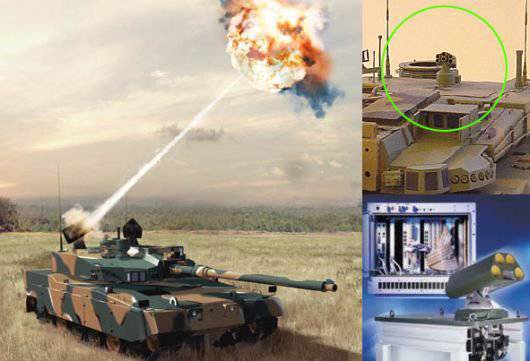
Iron First provides all-round protection of armored vehicles against subsonic anti-tank missiles and rocket-propelled grenades at the turn of the 10 meters interception. The system response time is not announced. The number of intercepted targets is limited by the number of mortar barrels.
The most well-known foreign model of active protection and the second one adopted for service is the Israeli SAZ Trophy developed by Rafael and Elta. The system consists of two gun carriages rotating in a vertical and horizontal plane, protective ammunition in the form of blocks of explosive with a metal lining of a given crushing, mechanized stacking, a radar with four phased antenna arrays mounted on the edges of the tower, and an electronic fire control unit. The carriages are installed on the sides of the tower and are separated from it by protective fences. Intercept subsonic anti-tank missiles and rocket-propelled grenades within the radius of 10 meters and in the 360 ° sector horizontally and 55 ° vertically. The system response time is 0,05 seconds. The reload time and the number of protective ammunition in the mechanized packing are not announced.
The first combat use of the SAZ Trophy dates back to March 2011 of the year on the Israeli border with the Gaza Strip, where the system successfully intercepted a rocket grenade fired from a hand-held anti-tank grenade launcher on a Merkava Mk.4 tank.
The German company ADS - Gesellschaft fur aktive Schutzsysteme developed SAZ AMAP-ADS, mainly focused on the protection of lightly armored vehicles. The system consists of a set of passive long-range infrared radiation sensors, short-range laser emitters, protective ammunition in the form of fixed explosive blocks with metal facing of a predetermined crushing, mounted obliquely around the perimeter of the combat vehicle hull, and electronic control equipment. Infrared radiation sensors are used to determine the direction of attack, laser emitters - to determine the coordinates and speed of movement of the target when approaching the protected perimeter at a distance of 10 meters. At the intersection of the specified frontier, an appropriate protective munition is initiated, creating a curtain of fragments.
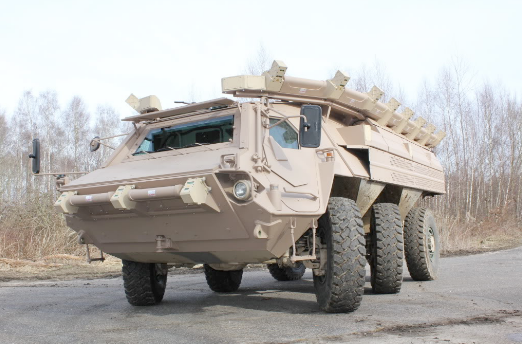
The main disadvantage of SAZ AMAP-ADS is the partial protection of the projection of the combat vehicle — only the surface located below the line of attachment of the explosive blocks. In addition, the operation of any unit completely removes protection from the surface area over which the unit was fixed.
Until recently, the American SAZ Quick Kill, developed by Raytheon as part of the FCS armored platform program, was considered the most promising active defense model. The task for its development involved the creation of an active defense system for interception (up to 150 / 800 meters) of all types of attacking ammunition - artillery shells, anti-tank missiles, rocket-propelled grenades and striking elements with attack cores. In this regard, the Quick Kill has an original design, which consists of 16 vertical guides, two types of homing missiles of different radius of action, equipped with non-directional fragmentation warhead, propulsion engine and inertial guidance system, as well as a radar and electronic unit fire control. Provides vserakursnaya protection armored vehicles. The system response time is 0,02 seconds.
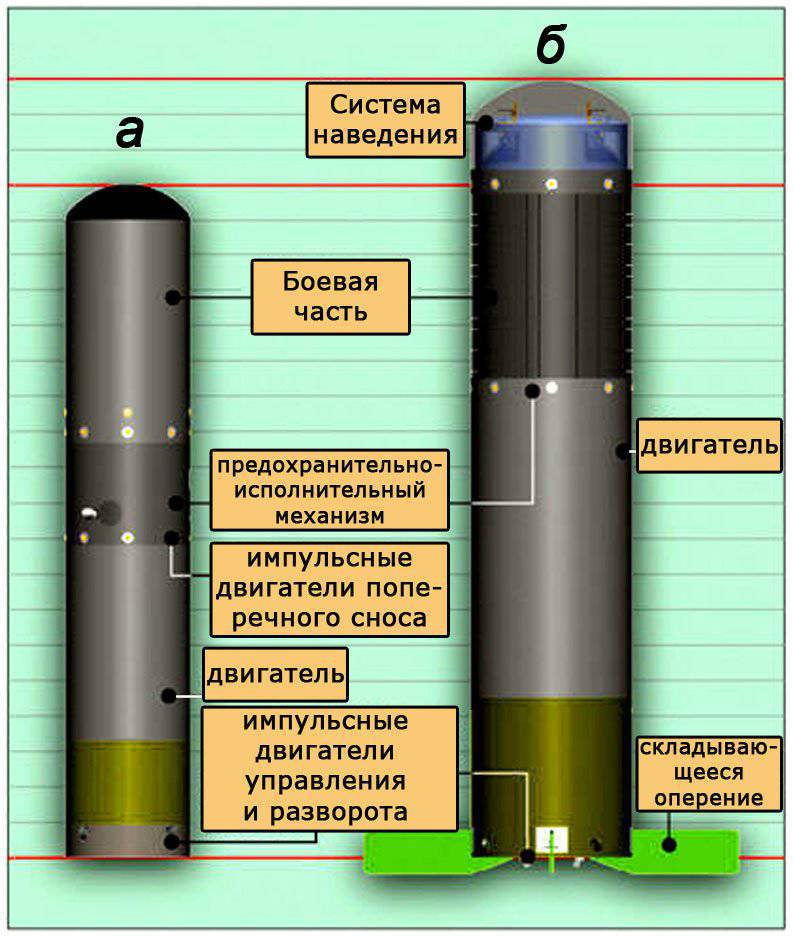
Despite the many years of improving the Quick Kill SAZ, it has so far not been able to demonstrate the interception of targets with a flight speed of more than 700 m / s. The main reason is the accumulation of errors in the inertial rocket homing system as the distance from the protected combat vehicle increases and the associated increase in the deviation of the rocket’s flight path from the target’s flight path.
The most recently developed model of active protection is the Russian KAZ Afganit of the Kolomna KBM designed for installation on combat vehicles created in the framework of the prospective Armata armored platform. From open sources of information, only the millimeter range of his radar is known, the near line of interception and the maximum rate of interception of armor-piercing sub-caliber shells - 1700 m / s. Nevertheless, it can be assumed that, unlike domestic and foreign predecessors, for the first time in “Afganit” it is planned to use protective ammunition with a warhead of the shock core type, described in the Russian patent RU 2263268. The launcher consists of a carriage rotating in a vertical and horizontal plane. Additional targeting of the shock core to the target is carried out using a programmed initiation of one of the fuses located in the form of a matrix on the back side of the explosive unit of the warhead.

On the one hand, this innovative solution is the most effective for defeating small-sized high-speed armor-piercing sub-caliber shells. On the other hand, the use of a compact shock core instead of the spatial flow of fragments requires the radar and the KAZ fire control system to realize a higher level of accuracy in determining the coordinates, speed and direction of flight of the targets.
A promising active defense system is faced with an even more difficult task - intercepting high-speed kinetic rockets and attack nuclei with an approach speed from 2500 to 3000 m / s. If we proceed from the best reaction time achieved in KAZ Zaslon and equal to 0,001 seconds, then the minimum allowable line of interception can be estimated at 4 meters (with a margin). This means that all potentially dangerous projectiles / missiles / rocket grenades flying above the roof of the combat vehicle’s turret below a specified height should be intercepted without fail as far as the car.
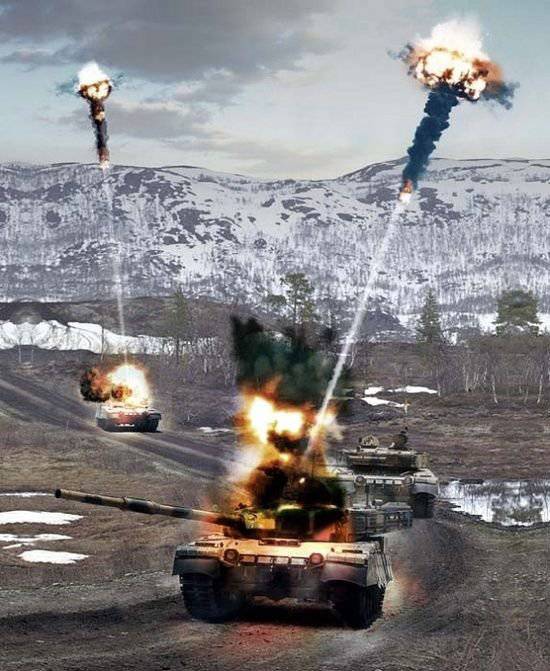
A radar (using a millimeter-wave phased antenna array) and an electronic unit (equipped with a high-performance multi-core processor) of a prospective active protection system should be able to detect and track many potentially dangerous targets, including tandem ammunition, which are divided into parts in the immediate vicinity of the interception line, and eject false goals after overcoming this milestone. To repel a salvo attack or a line of projectiles fired from an automatic cannon, it is necessary to ensure: in the first case, the possibility of simultaneous launch of several protective ammunition and in the second case, their launch in accordance with the rate of artillery firing.
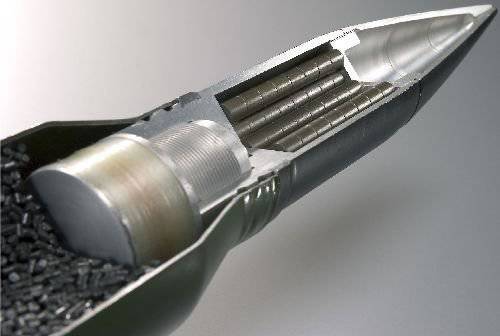
The greatest danger to the functioning of the active protection system are anti-radar ammunition (such as AHEAD projectile), the combat units of which are equipped with ready-made attack elements in the form of tungsten shrapnel. The ammunition homing system is aimed at radar radiation, the warhead is undermined outside the intercept line, and a directed beam of striking elements is guaranteed to disable the phased antenna arrays. In this regard, a promising active protection system will necessarily require a set of measures, including overlapping adjacent antenna viewing sectors (up to 50 percent) and transition from metal planar to semiconductor printed antennas with an excess amount of radiating / receiving elements (up to 100 times) .
The improved design of active protection will help armored vehicles, primarily tanks, to maintain their place as the main striking force of the ground forces in full compliance with the changing conditions of combat.
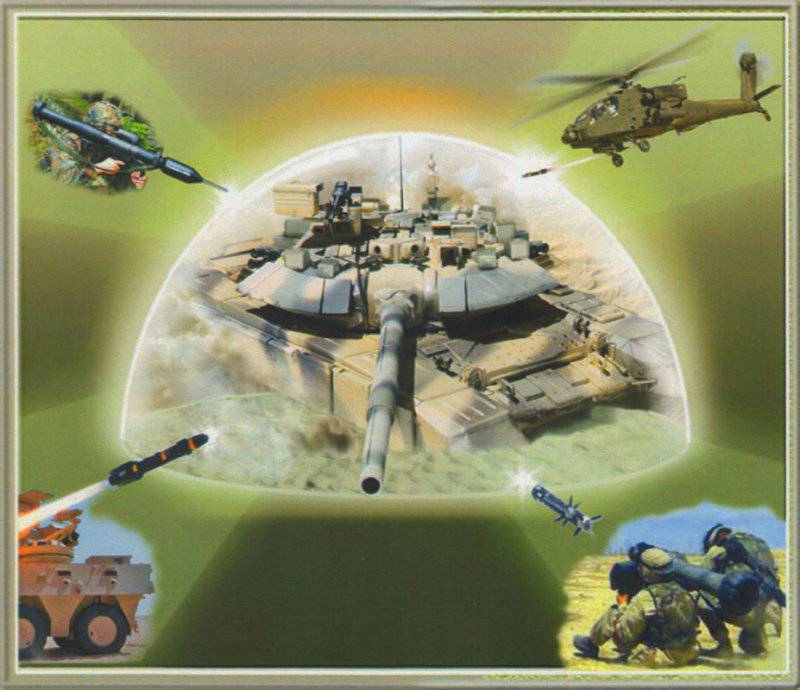
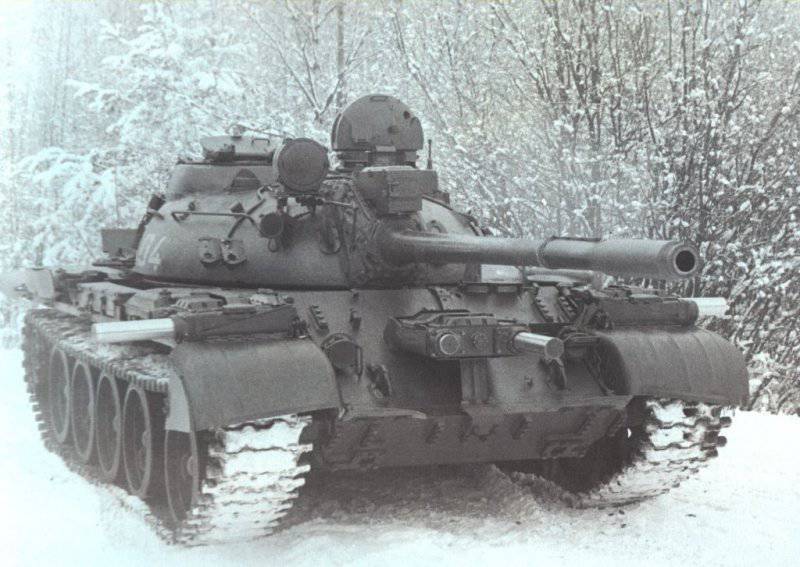
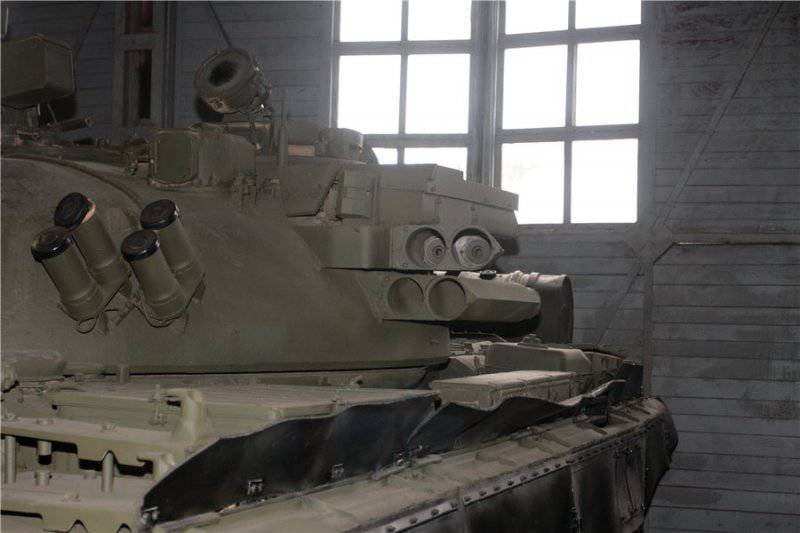
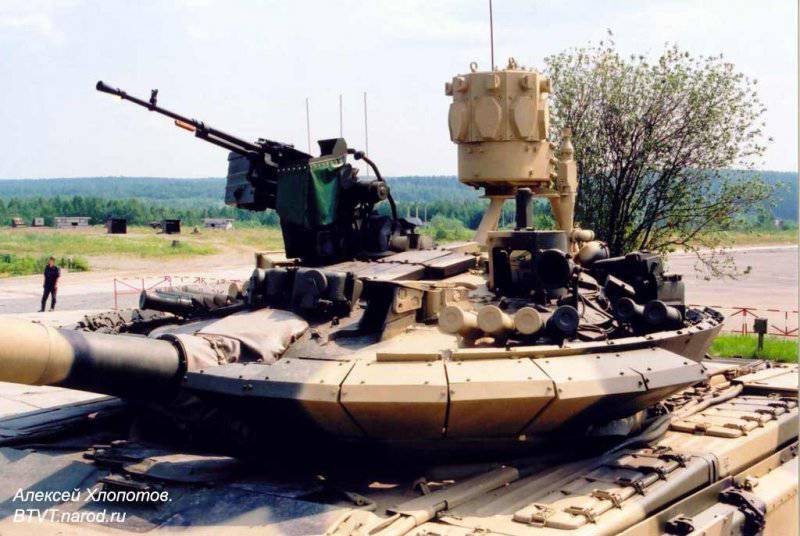
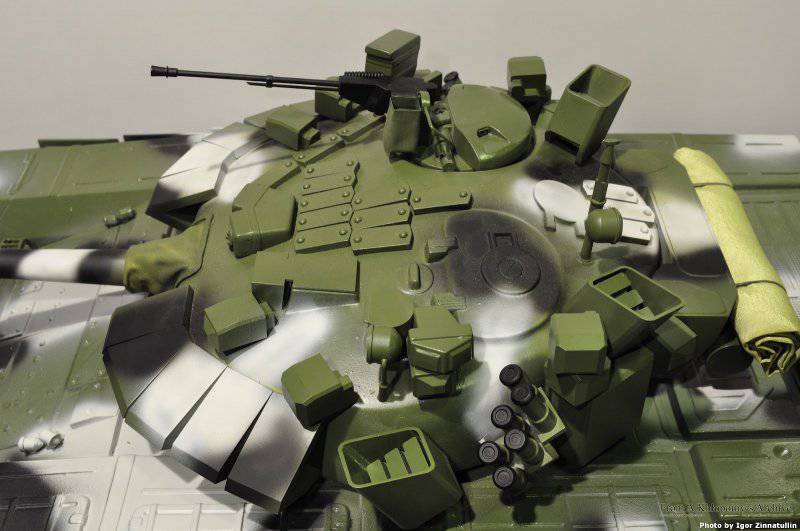
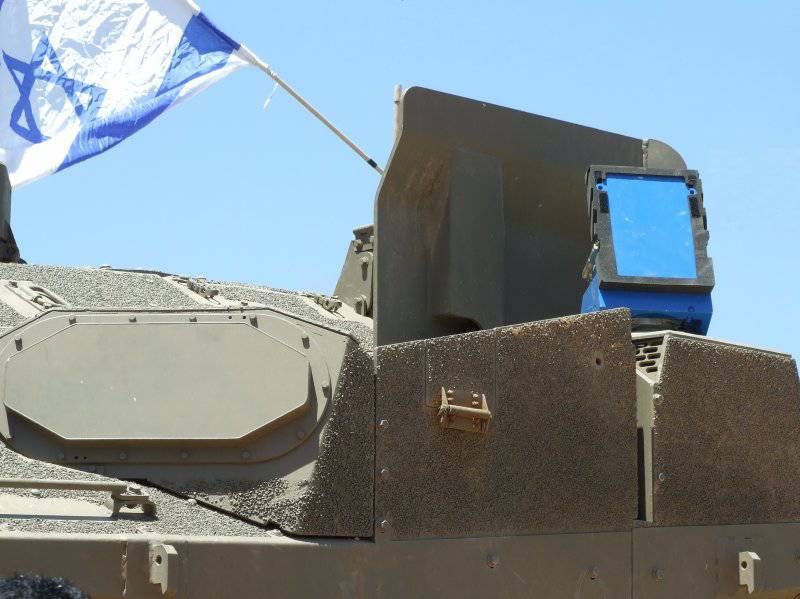
Information